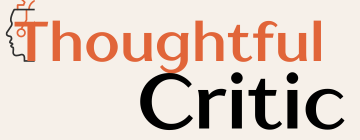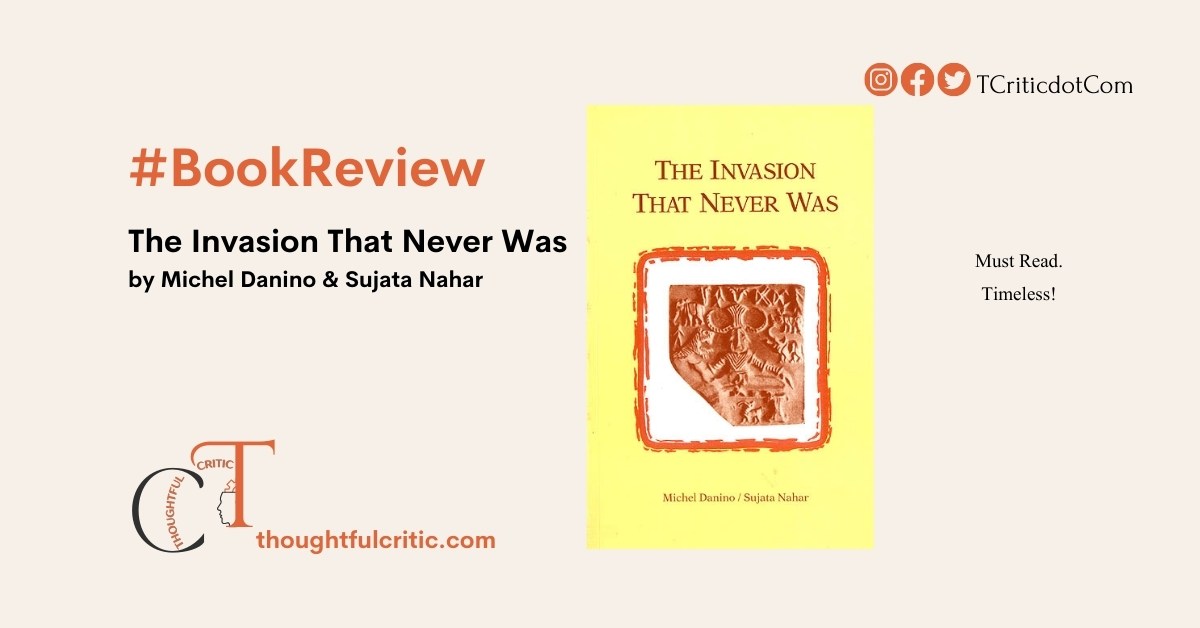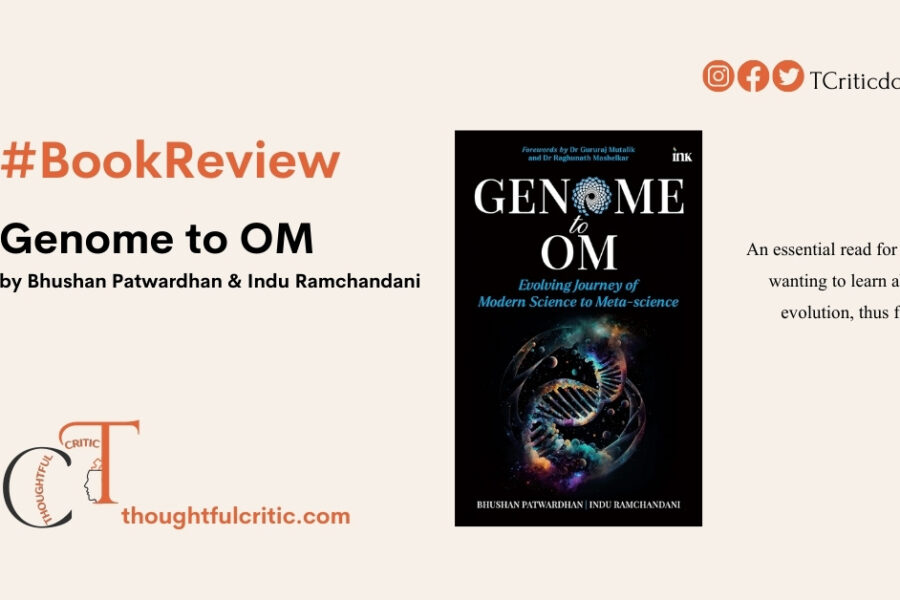“As established as it may have become through decades of thoughtless repetition, the “Aryan invasion theory” as it is called, does not rest on a single solid piece of evidence.”
The assertion tells a lot. For many decades, a particular section of academia and intellectuals have pushed the flawed and imaginative theory of an invasion.
The Invasion That Never Was & Song of Humanity is a compelling and meticulously researched book that challenges the Aryan Invasion Theory (AIT). This narrative has shaped our understanding of ancient Indian history for decades. Authored by Michel Danino and Sujata Nahar, the book debunks this colonial construct through a holistic examination of literary, archaeological, genetic, linguistic, and scientific evidence. This deeply persuasive work serves as both a corrective to historical misconceptions and a celebration of India’s rich and continuous civilisation.
The authors argue convincingly that the AIT, a relic of colonial historiography, is neither supported by Indian tradition nor substantiated by modern evidence. The book systematically dismantles the theory, presenting an integrated view of India’s past, where cultural continuity, rather than rupture, is the hallmark.
Structure and Argument
The book is divided into two parts—The Invasion That Never Was and Song of Humanity. Each part has specific chapters addressing various aspects of the Aryan Invasion Theory and its ramifications. The structure enables readers to trace the evolution of the AIT, understand its colonial underpinnings, and explore the extensive evidence against it.
Historical Background and Motivations
The authors set the stage by explaining how the AIT was crafted in the 19th century to serve colonial interests. Chapters like The Birth of a Myth and The Oriental Renaissance provide a thought-provoking analysis of how initial European admiration for India’s ancient civilisation transformed into a narrative that justified subjugation. The book exposes the economic and political motives of the British Empire, as seen in chapters like Inconvenient Guests and Divide and Convert.
“To Speak of an Aryan race of three thousand years ago is to put forward a gratuitous hypothesis; but to speak of it as if it still existed today is quite simply absurd.”
Salomon Reinach’s quote argues that suggesting the existence of an Aryan race three thousand years ago is an unfounded assumption. However, claiming that such a race exists today is outright ridiculous. Essentially, Reinach criticises the notion of a distinct Aryan race in historical and contemporary contexts.
Cultural and Linguistic Misinterpretations
The chapters Scholarly Trickery and From Sanskrit to the Master Race reveal how Sanskrit scriptures were misinterpreted to fit the invasion hypothesis. The authors critique the AIT’s linguistic arguments, challenging the notion that Indo-European languages originated outside India.
Archaeological and Genetic Evidence
Perhaps the book’s most convincing section is its exploration of archaeology. Chapters like Evidence from Archaeology and Signs of Invasion? argue persuasively that no archaeological evidence supports the idea of a violent invasion or migration into the Indus Valley. The rediscovery of the Sarasvati River and the identification of Harappan settlements along its dried bed are presented as evidence of cultural continuity between the Vedic and Harappan civilisations. The authors also incorporate recent findings from genetics to debunk the racial underpinnings of the Aryan-Dravidian divide.
Indian Voices of Dissent
The book does justice to the rich intellectual tradition of Indian scholarship that has long rejected the AIT. Figures like Swami Vivekananda, Sri Aurobindo, and Dayananda Saraswati emerged as stalwart critics who advocated for a more accurate understanding of India’s past. The chapters Indian Protests and Evidence from Indian Tradition highlight their insights into Vedic texts and Indian history.
A Broader Perspective
The authors extend their critique of the AIT beyond India, examining its impact on European racial ideologies. Chapters like The Aryan Invasion of Europe and Race and Genetics connect the AIT to 19th and 20th-century concepts of racial supremacy, revealing its role in fostering divisive ideologies.
Major Strengths
Interdisciplinary Approach
The book’s strength lies in its interdisciplinary methodology. By combining evidence from archaeology, genetics, linguistics, and Indian traditions, the authors provide a robust argument against the AIT.
Clarity and Accessibility
Despite its scholarly rigour, the book is accessible to a broad audience. The lucid writing ensures that complex ideas, such as the linguistic origins of Indo-European languages or genetic evidence of population continuity, are easily understood.
Empirical Rigour
The authors cite numerous archaeological findings, including the lack of evidence for an invasion and the remarkable urban planning of Harappan cities, to reinforce their argument. The juxtaposition of historical claims with empirical evidence creates a powerful narrative.
Relevance to Contemporary Discourse
The book’s critique of divisive narratives, particularly the Aryan-Dravidian divide, resonates with contemporary discussions about cultural and social unity in India. The authors contribute to a more inclusive understanding of India’s heritage by dismantling the racial constructs that underlie the AIT.
Impactful Insights
Several insights from the book stand out as groundbreaking:
- The absence of any mention of an Aryan invasion in the Vedas, which instead describe a homeland deeply connected to North India.
- The discovery of over 1,500 Harappan sites along the Sarasvati riverbed aligns with Vedic descriptions of geography.
- The symbolic nature of Vedic battles is misinterpreted as historical conflicts between Aryans and Dravidians.
- Genetic evidence challenges the idea of distinct Aryan and Dravidian races.
Critique
While the book’s arguments are robust and its evidence compelling, some readers may feel that specific chapters, particularly those on European racial ideologies, deviate slightly from the central focus. However, this broader perspective enriches the narrative by placing the AIT within a global context.
Conclusion
The Invasion That Never Was is a monumental work that reshapes our understanding of India’s ancient past. Through careful dissection of the Aryan Invasion Theory, Michel Danino and Sujata Nahar reveal India’s enduring cultural and civilisational continuity. The book is both a rebuttal to colonial historiography and an affirmation of India’s rich and unified heritage. It is essential reading for anyone interested in history, archaeology, or the cultural roots of South Asia.
This book debunks a flawed theory and inspires a re-examination of history with a lens rooted in truth and evidence. It deserves a place on the bookshelf of every scholar, student, and history enthusiast.
Vyom for Thoughtful Critic
The Invasion That Never Was and Song of Humanity by Michel Danino and Sujata Nahar Book Review
-
Critical Rating
Summary
It is a timeless read, a repository of some of the earliest counters to the strange (but deliberate) figment of imagination that the Aryan Invasion Theory was. It is a must-read!




